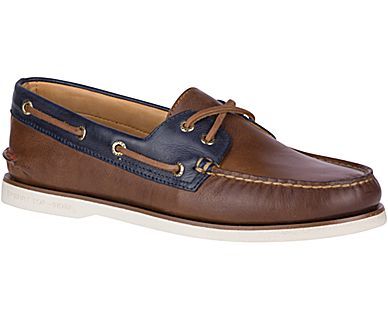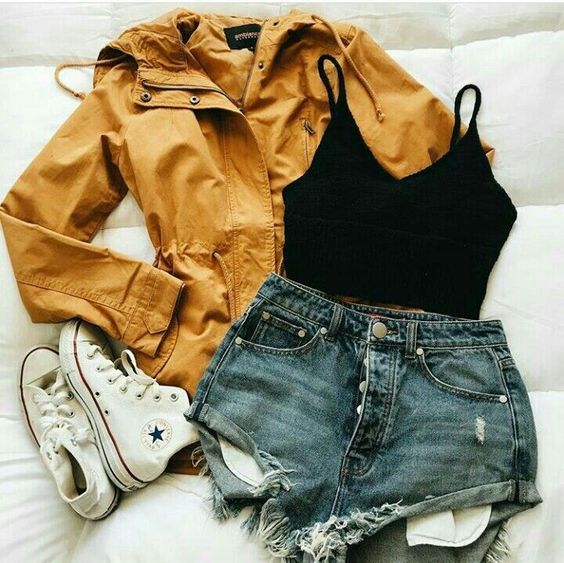Attending acting classes and auditions appropriately is crucial. Let’s go over the many outfits you should carry and the locations where you will wear them. Being actors and actresses ourselves, we are fully aware of what to bring to class and behind-the-scenes tricks that will make your acting class experience incredibly active, exciting, and enjoyable. What to dress to one’s first acting class is a concern shared by practically all actors. Do you want to stand out from the crowd or blend in with it by wearing something unique? Moreover, how will the instructor and other students react? How should I prepare for acting class? What do performers put on for auditions? It might be nerve-wracking to attend an audition. However, I believe that following a straightforward dress code for your first acting lesson can make you feel less pressure.
What to Wear to an Acting Class

It’s essential to dress in a way that allows you to move comfortably and feel confident. You don’t want to be self-conscious about something as simple as what you’re wearing. If you’re not comfortable, it can make it difficult for you to fully focus on the material and your fellow students.
On top of that, there are some things that are just simply more practical than others. For example, wearing heels or sandals is generally not recommended because they can slip off when you’re moving around the stage or studio floor.
Here are some general tips for dressing for acting classes:
1. Wear clothes that fit well. Make sure that all of your clothes fit properly so that they don’t constrict your movement or distract from what’s happening in class. If something doesn’t fit right, then get rid of it; it’s just not worth keeping around if it doesn’t work for what you need it to do.
2. Choose clothes with simple designs and colors so they won’t distract others from their own performances during practice sessions or auditions or cause sensory overload during improvisation exercises (like too much pattern).
What you wear can make or break a performance, and it’s important that the right clothes are chosen for your particular acting class. There are many different types of classes, and what you wear will depend on which type you’re taking. For example, if you are studying in a dance studio then it’s best to wear something that is comfortable and easy to move in.
The most important thing when choosing what to wear is comfort. It isn’t necessary to spend a lot of money on new clothes if you don’t have the budget for it. You can always borrow clothing from friends or family members who might have something suitable for an audition (and return it after!).
Audition Wear
When it comes to auditions, there are many different styles of clothing that actors may choose from. It’s important to remember that the most important thing is that you feel confident in what you wear and feel comfortable moving around in it. This will allow you to focus on giving your best performance rather than worrying about how you look!
For men: black pants or jeans, a nice shirt (preferably white), black shoes, socks and belt (optional).
In order to act well, you need to be in the right headspace. The right clothes can help you get there.
Here’s some advice on what to wear for an acting class:
1) Wear clothes that are comfortable, but still look nice. It’s all about balance here. You want to wear something that doesn’t restrict your movement, but also doesn’t make you feel uncomfortable or self-conscious. If you’re not sure what that means, ask a friend if they think your outfit is too casual or too formal for the occasion.
2) Do not wear anything that draws attention away from your face (e.g., hats or sunglasses). You want people looking at your face and listening to what you have to say—not at your shirt or hair style! In other words, don’t go out of your way to dress up in a way that might distract people from what really matters: your performance!
It’s not surprising that actors are always asked about what to wear. The truth is that there is no one right answer for all auditions. However, there are some general guidelines you can follow to help you prepare for your next audition.
You should always dress appropriately for the role you are going out for. For example, if you are auditioning for a period piece, then it might be appropriate to wear clothing from the era in which the piece takes place. If it’s a contemporary piece set in modern-day America, then you should dress as if you were heading out on a Friday night downtown.
If at all possible, try to bring along two copies of the sides (or script pages) with you to an audition: one copy for yourself and one copy for the casting director or producer who will be reading with you during your audition. This will allow them to follow along as they read their lines and help prevent any confusion about what lines are being read by whom.
Make sure that your clothes fit well and don’t have any holes or stains on them before going into an audition. Make sure that your shoes have been polished recently so they don’t appear worn down or scuffed up when walking into an office building
The truth is that there are no hard and fast rules about what actors should wear to an audition. You don’t have to wear a suit or a tuxedo, and you don’t have to show up in jeans and a sweatshirt. The only rule of thumb is this: Dress comfortably and appropriately for the role you’re going in for.
If it’s a contemporary play, wearing something fashionable is fine as long as it doesn’t distract from the character and plot. If you’re going in for a period piece or historical drama, though, don’t wear anything too modern or flashy (like bright colors).
Audition Etiquette: What Do Actors Wear?
You can never go wrong with black pants, black shirt and black shoes; they’ll match anything else you throw on top of them! And while it’s not mandatory, most actors opt for brown or tan shoes instead of black — they look better with khakis or dark jeans than black ones do!
If you’re auditioning at an Equity theater, there’s a good chance you’ll need to be able to jump onstage quickly — especially if there are multiple callbacks scheduled for each actor.

What to bring to acting class
Wear a comfortable outfit that makes you feel good about yourself, but also takes into account that you may be sitting for long periods of time.
Wear a top with enough stretch to support and move your arms freely. Usually, this means avoiding stiff cotton or thick fabrics like wool or tweed.
Wear something that allows your body to breathe – avoid anything that can trap heat in the room or under your clothing. Cotton is not ideal because it will absorb sweat and become heavy over time, which is why most actors need to wear tights under their pants.
We all want to look good. But what exactly do you wear to an acting class?
The best advice is to wear comfortable clothing that allows you to move freely. If the class is a physical one, make sure your clothes are not too tight or restricting, as this can cause injury. For example, avoid wearing denim jeans or leather shoes if possible.
You may also want to bring a notebook and pen, as this can help you keep track of what you have learned during the course.
If you’re taking an acting class, you’ll need to bring a few things with you. You probably have some of these things already, but if not don’t worry; this list will be useful for all kinds of acting classes.
A pen or pencil (you may want to bring more than one).
A notebook, either spiral or loose leaf. If it’s not too bulky, bring a laptop and use that instead (it’s easier to type notes).
If there are exercises where everyone has to read aloud, bring a copy of whatever text is being used (if possible) so you can read along with everyone else.
If your teacher provides handouts with every class, bring those as well.
Please bring:
1. An open mind
2. Your acting resume
3. A pen or pencil (optional)
4. A water bottle (optional)
5. A snack (optional)
6. An attitude of gratitude and willingness to learn
The short answer is: whatever you want.
The long answer is that there are some things you should bring to class, and some things you probably shouldn’t.
We highly recommend bringing a notebook and pen with which to take notes during class. We also suggest keeping your phone off or on silent so that you can focus on the material being presented. Other than that, anything goes!
What to Wear at College: Outfit Ideas for Students
College is a life-changing experience for anyone. The college experience has a different shock factor for every girl, depending on your situation and where you attend. Some young women who decide to attend university far away from their hometown experience a major culture shock when they arrive at their chosen school. Others have a bit less to adjust to if they choose a local school and are already familiar with the area and its norms.
No matter where you go to college or what you’re studying, however, creating the perfect ‘college wardrobe’ can be a challenging hurdle for any fashion lover. The life you’ve had throughout your childhood and adolescence goes through huge changes when you leave for college. You don’t live in your childhood home anymore. The dreaded dress code you cursed through high school is long gone. You probably don’t have your car with you at your dorm, so you have to walk or bike or bus everywhere. Your new bedroom is half the size of your at-home one and you share it with a brand-new stranger. Almost everything in your life is different, so it makes sense that your wardrobe needs to change too.
1. Focus on the Essentials
When you break it down to essentials, creating a functional and practical college wardrobe becomes much more simple. Regardless of the university you attend, there are many universal essentials that all college girls need in their dorm closet. You’ll need everyday staples. Plan on packing multiple pairs of jeans, basic tops, casual tennis shoes, and flip-flops. However, there are other items you should also bring that might not be quite as obvious.
It’s a good idea to invest in a few pairs of real pajamas. You don’t have to wear a full flannel PJ set, but if you sleep naked or in a giant T-shirt at home, at least buy a few pairs of shorts and crop tops that somewhat match. You’ll be seen in your pajamas much more frequently in college than you might think, whether it’s just by your dorm or suite mates or by your entire dorm floor when you’re on your way to the bathroom in the morning. Another underrated essential is a formal dress. It will probably gather dust in your tiny dorm closet for most of the year, but every woman should always be prepared with a nice dress. You’ll be happy you have it with you if an occasion when you need it arises.
2. Prioritize Comfort
Comfort is key when it comes to a quality college wardrobe. College is a big adjustment and it comes with a lot of stress and business along with. When you’re rushing from the coffee shop to class to a sorority party to the dining hall to your dorm and back to campus all in one day, you don’t want to be worrying about your shorts riding up or the straps of your crop top digging into your shoulders.
When you buy new outfits to bring with you to college, ask yourself if they’re comfortable before you buy them and be honest with yourself about the answer. If you bring a wardrobe of cute and completely impractical clothes to college with you, you’ll end up wearing the same black tee and skinnies again and again. It’s a much better idea to prepare yourself with a wide variety of comfortable pieces and bring them with you from the get go.
3. Be an Outfit Repeater
Dorm closets are extremely tiny. Because you have limited space in college, it’s a good idea to invest in a variety of pieces that work multiple ways. That means you should fill your closet with versatile basics like solid tees, crop tops, high-waisted jeans and shorts, and sweaters that can be paired together in many different ways.
4. Don’t Fall Into a Sweatshirt Slump

There’s nothing wrong with sweatshirts and sweats and you will inevitably end up wearing them to class sometimes, especially if you’ve cursed yourself with an 8 a.m. However, if you don’t want to look like every other college freshman dragging herself around in a sweatshirt, arm yourself with the wardrobe you need to avoid this dreaded sweatshirt slump.
Invest in multiple pairs of quality leggings. Good leggings are almost as comfortable as sweats, but they’re much cuter. Grab cheap fitted tees whenever you find them, too. They’ll help you stay comfy in class but make it clear that you do, in fact, have a figure.
5. Mix Cute and Practical
Your outfits can be both cute and practical; you don’t have to choose between the two. Rely on basics as the foundation of your wardrobe, but buy basics that you actually like and look forward to putting on in the morning. You can also dress up your simplistic looks with comfortable accessories, like a pendant necklace or a fashion scarf.
6. Know When to Dress Up and When to Dress Down
It is not necessary and not recommended to wear your cutest off-the-shoulder romper and a pair of wedge heels to your 8 a.m. American history section. Most everyday activities in college warrant casual outfits. There are not many times when you’ll need to get dressed up. Even the majority of college parties call for casual wear or wacky costumes before a formal dress.
You do still need minimal professional and formal outfit options in college, however. When you go to a job interview, to meet one-on-one with a professor, or out on a date, you’ll need to be able to put together a less casual look.
7. Get the Right Shoes
Stilettos might be your favorite type of shoe, but they’re just not going to fly in college. When you’re in college, you’re going to be walking a lot. It’s important to buy shoes that are comfortable first and cute second. Make sure that every pair of shoes you buy has supportive soles that will allow you to walk long distances comfortably.
Nikes, Converse, and flip-flops will be your saving graces when it comes to shoes in college. When the time comes for more formal shoes, opt for wedges, chunky heels, or scrappy sandals unless you want to walk back to your dorm after a party limping and carrying your pinchy shoes in your hands.
Creating a college wardrobe is a challenge for every girl. There’s no need to spend your entire life savings on a brand new clothing collection before you leave for school. Use the essentials you already have, keep things simple, and try not to stress. There are much bigger things than your wardrobe to focus on in college, but you’ll feel better with a closet that’s prepared for any adventures and new experiences that come your way.



